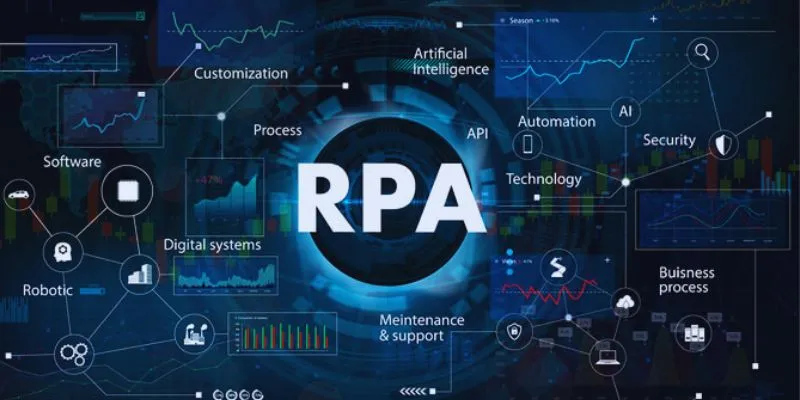Robotic Process Automation (RPA) is revolutionizing how companies operate. By automating tedious tasks with precision and speed, RPA is already being utilized across various sectors to enhance efficiency and cut costs. From healthcare to finance, automation is accelerating processes, reducing errors, and liberating staff for more critical tasks. This allows businesses to scale without increasing personnel costs. However, while RPA integrates well with updated systems, there are still challenges faced by many industries.
Issues such as data security, expense, and complexity can arise. Understanding both the advantages and disadvantages is crucial. Before investing, companies should assess the value of RPA and align solutions with their specific needs. Here, we explore the main benefits and drawbacks of RPA across several fields.

Finance Industry: Faster Operations and Compliance Challenges
RPA enhances the speed of banking operations by automating credit checks, data entry, and compliance reporting. It allows financial companies to efficiently handle high-volume tasks, improving data accuracy and reducing human errors. Customer service automation and fraud detection also benefit. Banks utilize bots for loan processing and account opening, ensuring compliance requirements are met promptly. RPA also facilitates data movement across legacy systems.
However, there are negatives, such as regulatory issues. Regulations frequently change, and bots may not respond immediately. Over-reliance on RPA can lead to system vulnerabilities during audits. Customizing bots for complex tasks can be costly and time-consuming, and cybersecurity risks remain a concern. Despite these challenges, RPA can significantly enhance operational efficiency in finance when used cautiously.
Healthcare Industry: Accurate Data Handling and High Integration Costs
RPA supports accurate record-keeping in healthcare, speeding up patient data entry and ensuring consistency. It is used in hospitals for appointment scheduling and claim processing, expediting pre-authorization and discharge protocols. This reduces errors in handling patient information, allowing staff to focus more on patient care. RPA also aids in tracking compliance and inventory control.
Nevertheless, there are significant drawbacks. Integration with Electronic Health Records (EHR) systems can be costly, requiring extensive customization. A lack of technical expertise may hinder seamless adoption, and privacy concerns become paramount with patient data. Issues in automated data handling can affect treatment quality. Meticulous bot maintenance is essential to meet standards. With the right balance, RPA can enhance healthcare delivery, but it requires careful planning.
Retail Industry: Enhanced Customer Service but Difficult Scaling
RPA benefits retailers by improving supply chain management. Simple automation of returns and order tracking, along with chatbot integration, speeds up customer support. RPA guides inventory control and loyalty program management, while faster analysis of sales data supports real-time decision-making. It enables stores to automatically update product catalogs and facilitates tailored promotions and pricing comparisons.
However, scaling challenges exist. RPA tools may struggle with seasonal demand surges, and integrating bots into legacy retail systems is time-consuming. Smooth automation requires process changes, and employee resistance due to job loss fears can occur. Errors in pricing bots can lead to customer dissatisfaction. Constant monitoring is necessary to maintain performance. Retailers should focus on hybrid automation to mitigate these issues.

Manufacturing Industry: Efficient Production and Maintenance Concerns
RPA accelerates industrial processes by automating quality control, inventory updates, and purchase orders. It enhances coordination in supply chain activities and alerts in predictive maintenance to prevent equipment breakdowns. RPA reduces paperwork in procurement and speeds up vendor onboarding while enabling faster capture and analysis of machine data.
However, RPA in manufacturing has disadvantages. It requires skilled personnel for maintenance, and without proper oversight, bots can malfunction. Equipment downtime may increase if bots fail during operations. Customizing RPA for physical systems is expensive, and integrating legacy systems remains challenging. Real-time updates may lag without adequate control. Manufacturers need to invest in robust support for success. Automation can drive growth with careful planning.
Insurance Industry: Quicker Claims and Regulatory Limitations
RPA transforms insurance claim processing by speeding up claim verification and approval. Automated data entry and document validation streamline underwriting tasks, facilitating timely policy modifications and alerts. Automated inquiries enhance customer service, and insurance brokers use RPA to monitor policy renewals.
Nonetheless, there are limitations. Regulatory requirements vary by region and change frequently, making it difficult for bots to quickly adapt to new compliance criteria. Data breaches in claims processing are a significant concern. The complexity of policies demands tailored RPA systems, and errors in automated decisions can lead to customer disputes. Continuous bot updates, although costly, are crucial. Insurance companies should complement RPA with human checks to ensure accuracy.
Logistics Industry: Streamlined Deliveries but System Disruptions
RPA optimizes invoicing, shipping tracking, and routing in logistics. Companies automate status updates and delivery schedules, enabling efficient tracking of warehouse data and fuel consumption. Automated billing ensures quick vendor payments, and shipment status is updated in real-time for rapid fleet performance analysis.
Despite these advantages, potential drawbacks include operational disruptions. Network issues may cause bots to stop functioning, and software bugs require manual overrides. Older systems slow integration speed, and RPA may misinterpret poorly organized data. Scaling across multiple regions adds complexity and costs. Logistics companies should invest in hybrid models, combining RPA with human expertise for superior operations.
Public Sector: Improved Efficiency but Rigid Processes
RPA enhances administrative operations in government offices, automating notifications, approvals, and applications. It improves response times to citizen inquiries and speeds up processing in social services and tax filings. Data reports are generated without human involvement.
However, public sector organizations adhere to strict policies. RPA adoption requires approval at various levels, and security concerns limit the extent of automation. Older infrastructure complicates integration, and employee training demands time and resources. Resistance can slow change adoption. Properly utilized, RPA can improve public service quality.
Conclusion:
Robotic process automation offers speed and accuracy for many sectors, reducing manual errors and saving time. Scalability enhances cost-efficiency, but security concerns and integration costs remain key considerations. Different industries face unique challenges, and understanding both sides leads to better decisions. Successful RPA implementation requires meticulous planning, balancing tools for business automation with human oversight. As sectors evolve, the benefits of robotic process automation will continue to expand, leading to stronger business outcomes when strategically embraced.
 zfn9
zfn9























